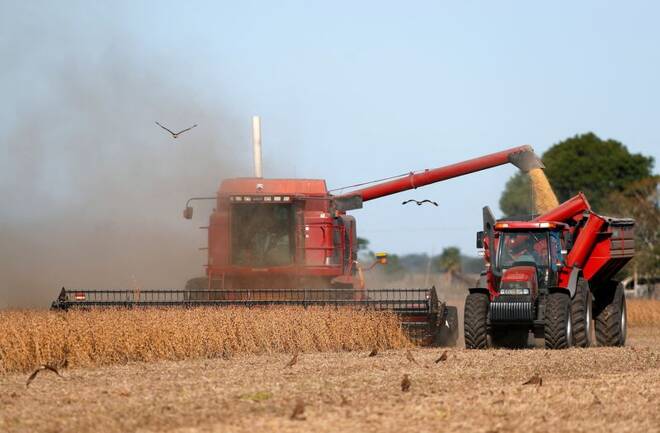Advertisement
Advertisement
Argentina looks to defuse economic timebomb with soy export boost
By:
By Anna-Catherine Brigida and Walter Bianchi
By Anna-Catherine Brigida and Walter Bianchi
BUENOS AIRES (Reuters) – Argentina has patched up its wobbly economy with a so-called “soy dollar” preferential exchange rate to boost grains exports and bring in much-needed foreign currency, which analysts said would give the government breathing room, at least temporarily.
The measures, which kicked in fully on Monday, give soy exporters a better exchange rate than the controlled official one, aiming to spur exports of some $15 billion of soy in the second and third quarters of the year to refill depleted reserves.
“The ‘farm dollar’ will not create extra foreign currency, but at least will accelerate it coming in and so provide temporary relief,” said economist Gustavo Ber, adding that foreign currency reserves had hit “critical levels.”
Argentina, heading towards crunch general elections in October where the governing Peronist coalition is facing the real prospect of defeat, has been battered by drought over the last year which is weighing on grains production, its top export.
This has squeezed the amount of dollars the central bank has in reserve, vital for making payments for imports and dealing with foreign debt obligations, even as Argentina battles inflation at over 100% and poverty that’s risen to near 40% of the population, according to government data.
“What (Economy Minister) Sergio Massa is trying to do is buy time and stop the bomb from exploding,” economist Rodrigo Álvarez told local radio.
The South American country, the world’s top exporter of processed soy and No. 3 for corn, is battling to right its troubled economy after years of crises and defaults. It has a $44 billion loan program with the International Monetary Fund (IMF) that has recently come under strain as the fund lowered the country’s targets for foreign reserves.
Argentina: reserves tumble Argentina: reserves tumble, https://www.reuters.com/graphics/ARGENTINA-ECONOMY/egpbkoralvq/chart.png
The so-called “soy dollar” was used twice last year and did help create a boost in exports, at least in the short-term helping ease availability of foreign currency.
Economist Roberto Geretto of Fundcorp estimated that in the best-case scenario, Argentina’s central bank could gain some $4 billion over the next two months, though then foreign currency income would fall away again given depleted harvests.
“This new measure aims to buy two months, which in the current context is not insignificant,” Geretto told Reuters.
Ber agreed the impact would be temporary but added the higher price given to exports could fan domestic inflation more, a key theme for voters ahead of the October ballot.
“The effect of these initiatives – as has happened in the past – would again be transitory, more than anything considering that the associated monetary issuance could end up putting even more pressure on inflation in the coming quarters,” he said.
(Reporting by Walter Bianchi and Anna-Catherine Brigida; Editing by Adam Jourdan and Aurora Ellis)
About the Author
Reuterscontributor
Reuters, the news and media division of Thomson Reuters, is the world’s largest international multimedia news provider reaching more than one billion people every day. Reuters provides trusted business, financial, national, and international news to professionals via Thomson Reuters desktops, the world's media organizations, and directly to consumers at Reuters.com and via Reuters TV. Learn more about Thomson Reuters products:
Advertisement
